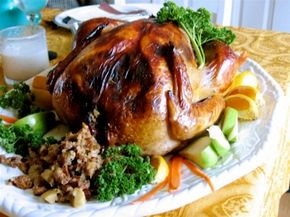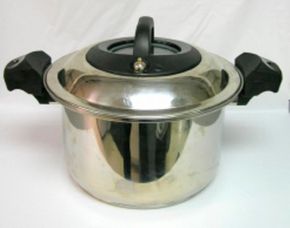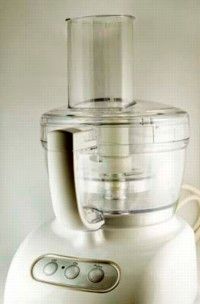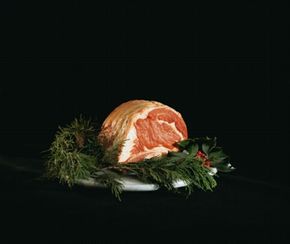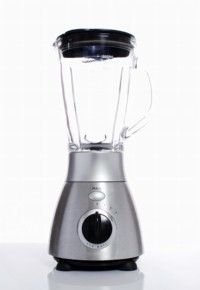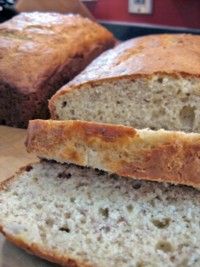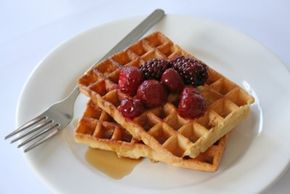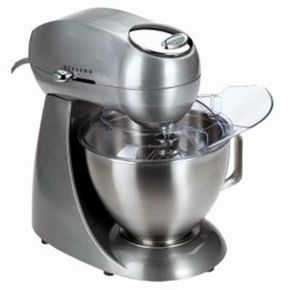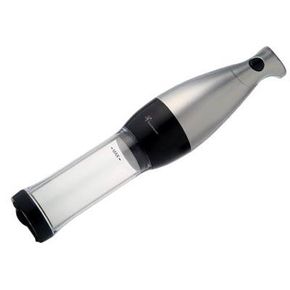Q. I'm new to baking my own bread. Does it matter in what order I add the ingredients to the bread maker?
A. For best results with a bread maker, always follow the manufacturer's instructions for the proper order of adding ingredients.
When adding ingredients like cheese, vegetables, raisins, and nuts, be sure to add them after the first kneading cycle. This will help prevent them from being broken up or crushed during kneading.
Q. I'm thinking of buying some small kitchen appliances for my new house. What are some things I should consider before I purchase a bread maker?
A. Do you love the aroma of baking bread? Do you miss the taste of freshly made bread? Would you bake bread if you had more time? If you answered yes to just one of these questions, you may be a candidate for a bread maker. Although bread making machines have been available for over a decade, only in the last few years have the choices been so many and the prices reasonable.
Q. What exactly does a bread maker do?
A. A bread maker is an electric appliance that mixes bread ingredients, kneads and proofs the dough, then bakes it. All you have to do is measure the ingredients and place them in the bread maker pan, then push a button or two.
Q. What should I look for when shopping for a bread maker?
A. All bread makers make good bread, so selecting the model for you means finding the one that has the most useful features for the amount you want to spend.
A potential buyer needs to know the maximum size loaf a bread maker will make. Typical loaf sizes are 1, 11/2, 2, and 3 pounds. A 11/2- or 2 -pound loaf is best for most consumers.
Even if you live alone and know that a 1-pound loaf will be just right for your everyday needs, it won't stretch very far if you're entertaining. The larger bread makers will always make a smaller loaf, but the reverse is not true. Most bread makers turn out oddly shaped loaves -- tall, round, or square. Some will make a more traditional rectangular loaf. If shape is important to you, factor this into your decision.
Q. What features are most important when choosing a bread maker?
A. The following features should be considered when shopping for a bread maker.
Dough Cycle: A dough cycle allows you to remove the dough from the bread maker after proofing and shape it by hand. This is important if you want to make pizza crusts, shaped savory or sweet breads, or rolls.
Delayed Bake Time: This allows you to select a start time of your choosing so bread can be baking while you're sleeping or away from home.
Crust Color Selector: A color selector gives you a choice of crust color.
Preheat Cycle: This cycle warms ingredients to room temperature so you don't have to.
Rapid Bake: A rapid bake cycle accelerates the bread making process. Look carefully; you may find that one machine's basic bake time is faster than the rapid bake cycle of another.
Viewing Window: A window on the bread machine lets you check dough texture or baking color. This may be important at first but baking is usually consistent from use to use, so once you've determined the correct ingredient amounts for your machine and correct crust color, checking may not be necessary. Remember that you can always open the lid to check loaf texture and color.
Power Saver: If power goes out or unit is unplugged, a unit with a power saver feature will resume its cycle if restarted within a few minutes. A good feature if electrical service in your area is often interrupted.
Yeast Dispenser: This feature is a necessary feature if you choose a delayed bake time feature. Yeast is kept dry and added to liquid at the correct time to avoid overproofing.
Cool Down or Keep Warm Cycle: The cool down feature (usually about 30 minutes long) partially cools the bread and removes excess moisture from the machine so the loaf does not get soggy if you don't remove it immediately. Some machines have a keep warm cycle instead that keeps bread hot for a time.
Programmable Cycle: Consider this feature if you plan to bake any of the following bread types:
- Raisin and Nut Cycle signals when to add extra ingredients like nuts, raisins, and other dried fruits. It prevents these ingredients from breaking up during mixing and kneading.
- Whole Wheat Cycle is important if you plan to regularly make heavier whole wheat or whole-grain breads.
- French Bread Cycle produces a typical French bread with crisp crust and chewy interior by minimizing kneading and increasing proofing.
- Sweet Bread Cycle adjusts proofing time, baking time, and temperature for an ideal loaf. It prevents overbrowning that is more likely with sweetened breads with higher fat contents.
- Some bread machines also allow you to make cakes, quick breads, and jam.
For anyone who likes waffles, a waffle iron is a must-have kitchen appliance. Continue to the next page to find out how to choose and use a waffle iron.
For more helpful kitchen appliance tips and recipes, see:
